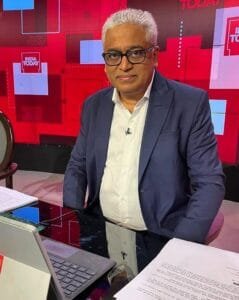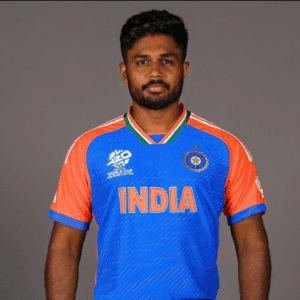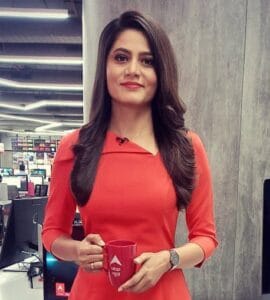
TOP 10 INDIAN DEBATE SHOWS OF 2025
TOP 10 INDIAN DEBATE SHOWS OF 2025
1. HALLA BOL

2. SEEDHA SAWAAL

3. POOCHTA HAI BHARAT

4. PAANCH KI PANCHAYAT

5. DANGAL

6. TAAL THOK KE

7. MAHABHARAT

8. SABSE BADA SAWAAL

9. MUQABLA

10. DO TOOK

Indian News Debate Shows: A Comprehensive Analysis
Indian news debate shows have become a staple of the country’s media landscape, evolving into a unique form of broadcast journalism that often blurs the lines between information dissemination and entertainment. These shows are characterized by heated exchanges, aggressive questioning, and the inclusion of multiple viewpoints on contentious political, social, and economic issues. The popularity of debate shows in India stems from the nation’s vibrant democracy, where public discourse is an integral part of civic life. However, these shows have also attracted criticism for sensationalism, biased reporting, and a lack of decorum.
This analysis delves into the world of Indian news debate shows, exploring their formats, impact on the public discourse, prominent personalities, criticisms, and the broader implications of this media phenomenon.
1. Evolution of Indian News Debate Shows
The roots of Indian news debate shows can be traced back to the late 1990s and early 2000s when private television news channels began gaining popularity in India. Channels like NDTV, Aaj Tak, and Zee News started airing programs where political experts, party spokespersons, and journalists debated various issues of national importance. These shows offered a platform for different opinions to be heard, helping the audience gain a better understanding of complex issues.
The format of news debates changed dramatically after the launch of 24/7 news channels like Times Now in the mid-2000s. Arnab Goswami, who became the face of Times Now’s flagship debate show “The Newshour,” revolutionized the format with his aggressive style of questioning, large panels of guests, and fiery monologues. His shows became more than just a platform for discussion; they were spectacles designed to capture public attention.
Following the success of Times Now, other channels adopted similar formats, creating their own debate shows that emphasized confrontation, opinionated anchors, and a fast-paced, high-energy format. Shows like India Today’s “Newstrack,” Zee News’ “Taal Thok Ke,” and Republic TV’s “The Debate with Arnab Goswami” further cemented the debate show’s place in Indian media.
2. Format and Structure of Indian Debate Shows
Indian news debate shows typically follow a standardized structure, though the tone and intensity can vary based on the channel and anchor:
- Anchors: The role of the anchor is central to Indian debate shows. Unlike traditional news formats where anchors serve as neutral moderators, many debate show hosts in India play a more dominant role. They often present their own viewpoints, aggressively question panelists, and sometimes even dominate the conversation. The anchor is not just a facilitator but a participant in the debate.
- Panelists: Debate shows usually feature a panel of 4-10 guests representing various sides of the issue. These panelists may include politicians, journalists, analysts, academics, social activists, and sometimes, public figures from the entertainment industry. Often, the panel includes representatives from rival political parties, ensuring heated exchanges and opposing viewpoints.
- Topics: The issues discussed on Indian debate shows range from national politics, international relations, and economic policies to social issues like caste, religion, gender, and corruption. Hot-button topics like India-Pakistan relations, internal security, and communal violence tend to dominate the airtime due to their emotional charge.
- Audience Interaction: While some debate shows involve live interaction with viewers via phone calls, text messages, or social media, most focus entirely on the studio debate. However, online platforms like Twitter and YouTube have increasingly become important for viewer engagement, with shows often trending on social media for their confrontational content.
- Style of Debate: The style of debate on these shows is often combative. Panelists are frequently interrupted, with voices raised and emotions running high. The use of graphics, video clips, and live feeds adds to the sense of urgency and drama. Anchors often use a rapid-fire approach, posing questions that demand quick responses and moving quickly from one panelist to the next.
3. Prominent Debate Show Anchors
Several news anchors have become household names in India, primarily due to their association with high-profile debate shows. Some of the most notable personalities include:
- Arnab Goswami: Known for his aggressive and loud style, Arnab Goswami is arguably the most recognizable face of Indian news debate shows. His signature show, “The Newshour,” on Times Now set the template for debate shows in India. After leaving Times Now, he founded Republic TV in 2017, where he continues to host “The Debate with Arnab Goswami,” one of the most-watched shows in the country.
- Rajdeep Sardesai: A veteran journalist, Rajdeep Sardesai is known for his relatively calm and composed demeanor. His debate show on India Today, “News Today with Rajdeep Sardesai,” offers a more balanced approach compared to some of his peers, though he doesn’t shy away from tough questioning.
- Ravish Kumar: As an anchor on NDTV India, Ravish Kumar has a unique style that contrasts with the aggressive tone of many debate shows. Known for his thoughtful monologues and focus on grassroots issues, Kumar’s show “Prime Time” is popular among viewers who prefer a more subdued, in-depth analysis of current affairs.
- Sudhir Chaudhary: Anchoring Zee News’ popular debate show “Taal Thok Ke,” Sudhir Chaudhary often focuses on nationalistic themes and issues of security. His style is more confrontational, and the show is known for its focus on topics related to Pakistan, terrorism, and Indian nationalism.
- Navika Kumar: A key anchor on Times Now, Navika Kumar took over the prime-time debate slot after Arnab Goswami’s departure. Her show “The Newshour” continues the channel’s tradition of fiery debates, with a focus on political controversies and national security.
4. Impact on Public Discourse
Indian news debate shows have a significant impact on shaping public opinion. In a country where television is one of the most widely consumed media formats, these shows reach millions of viewers every day. The confrontational format of these debates taps into the emotional investment many Indians have in political and social issues. By featuring representatives from various political parties and ideologies, debate shows provide a platform for conflicting opinions to be aired.
However, this has also led to the polarization of public discourse. In many cases, debate shows simplify complex issues into binary arguments, reducing nuanced debates into shouting matches between political representatives. This format often fosters an “us vs. them” mentality, with political parties and ideological factions portrayed as perpetual adversaries.
5. Criticism of Indian News Debate Shows
While debate shows are popular, they have attracted widespread criticism for several reasons:
- Sensationalism: Indian debate shows are often accused of sensationalizing news rather than focusing on facts. To attract viewership, shows tend to focus on emotionally charged topics and exaggerate the significance of certain events. For instance, issues related to national security, religion, or border conflicts are often presented in an alarmist tone, with provocative headlines and exaggerated claims.
- Bias and Lack of Objectivity: Many debate shows have been accused of political bias, favoring particular parties or ideologies. Critics argue that instead of facilitating a neutral platform for discussion, anchors often present their personal opinions as facts, manipulating the narrative to align with their political leanings. This has led to accusations that some media channels have become mouthpieces for political parties rather than impartial observers of current events.
- Deterioration of Decorum: The aggressive and confrontational style of debate has often resulted in shows descending into shouting matches, with multiple panelists speaking over one another and the anchor losing control of the discussion. This has led to concerns about the erosion of decorum in public discourse, with viewers questioning the value of debates that seem more focused on entertainment than information.
- Impact on Journalism: Critics argue that the rise of debate shows has contributed to a decline in serious journalism. Rather than investing in investigative reporting or in-depth analysis, news channels prioritize debate shows that can be produced quickly and generate high ratings. This shift has diminished the role of traditional news reporting and led to a culture of “debate-driven journalism.”
- Monopolization of Prime Time: Debate shows have dominated prime-time slots on Indian news channels, pushing out other formats like investigative documentaries, interviews, or ground reports. The focus on debates means that many channels have little time left for detailed coverage of under-reported stories, especially those affecting rural India or marginalized communities.
6. Positive Contributions of Debate Shows
Despite the criticisms, Indian news debate shows have some positive contributions:
- Increased Political Awareness: Debate shows have helped raise political awareness among the Indian public. They make current events more accessible to viewers who may not follow politics closely by providing a platform where key issues are debated in real-time. The high-energy format ensures that even complex topics are broken down and discussed in a way that is easy for the general audience to understand.
- Diverse Opinions: By featuring a wide range of panelists from across the political spectrum, debate shows ensure that multiple viewpoints are represented. This allows viewers to hear different sides of an issue, although the quality of debate varies greatly between shows.
- Engagement and Participation: Debate shows often encourage viewer participation through phone-ins, SMS polls, and social media interactions. This creates a more engaged audience that feels involved in the political process. Social media platforms like Twitter amplify this engagement, with hashtags related to debate shows frequently trending, reflecting the public’s interest in the discussions.
7. The Future of Indian News Debate Shows
As India continues to evolve as a media-savvy nation, the future of news debate shows may see significant changes. With the rise of digital platforms and
alternative media, viewers are becoming more discerning and have more options to choose from. Channels that rely on sensationalism may face declining viewership as audiences turn to more credible, independent sources of news.
Moreover, as concerns about media ethics and journalistic standards grow, there may be increased pressure on channels to prioritize factual reporting over entertainment-driven debates. Channels that adapt to these changes, offering more balanced, in-depth discussions, may thrive, while those that continue to rely on aggressive, polarized debates may see a decline in credibility and influence.
In conclusion, Indian news debate shows reflect the complexities of the country’s vibrant democracy. While they provide a platform for discussing critical issues and engaging a wide audience, their emphasis on confrontation, sensationalism, and bias raises questions about the role of the media in shaping public discourse. The challenge for Indian news channels in the coming years will be to strike a balance between attracting viewership and maintaining journalistic integrity.
FAQs
Here are 20 frequently asked questions (FAQs) about Indian debate shows, with detailed answers that explore their role in the media, impact, criticism, and unique features:
1. What are Indian news debate shows?
Indian news debate shows are television programs where panelists discuss and debate current political, social, and economic issues. These shows are typically fast-paced, with multiple guests presenting contrasting viewpoints, often moderated by a prominent anchor who plays a central role in steering the debate. Topics range from national security and political controversies to social justice and economic policies.
2. Why are Indian debate shows so popular?
Indian debate shows are popular because they tap into the public’s deep interest in politics and current affairs. The confrontational and high-energy format keeps viewers engaged, while the inclusion of multiple perspectives appeals to a diverse audience. Many viewers are drawn to the drama and intensity of these debates, which often resemble verbal sparring matches. Additionally, they provide a platform for viewers to see representatives of their political and social ideologies in action.
3. Who are some of the most well-known anchors of Indian debate shows?
Some of the most well-known debate show anchors include:
- Arnab Goswami (Republic TV, previously Times Now) – Famous for his aggressive style and the show “The Debate.”
- Rajdeep Sardesai (India Today) – Known for a more balanced approach on his show “News Today.”
- Ravish Kumar (NDTV India) – Known for his focus on grassroots issues and less confrontational style in “Prime Time.”
- Sudhir Chaudhary (Aaj Tak, previously Zee News) – Known for nationalistic themes in his debate show “Taal Thok Ke.”
- Navika Kumar (Times Now) – Host of “The Newshour,” known for handling political debates.
4. What topics are typically covered in Indian news debate shows?
Indian debate shows cover a wide range of topics, but the most common include:
- Politics: Elections, government policies, corruption, and party controversies.
- National Security: India-Pakistan relations, internal security, and terrorism.
- Social Issues: Caste, religion, gender equality, and communal violence.
- Economy: Government budgets, economic reforms, and financial crises.
- International Relations: India’s foreign policy and global alliances.
Popular and contentious issues that emotionally engage viewers tend to dominate these debates.
5. How do Indian debate shows differ from other types of news programs?
Indian debate shows differ from other news formats in several ways:
- Aggressive Moderation: Anchors play a dominant role, often driving the discussion rather than simply moderating it.
- Panel Format: A large number of panelists with opposing views are brought in to discuss the issue.
- Combative Style: These shows are marked by heated exchanges, raised voices, and often, panelists talking over each other.
- Less Focus on Reporting: Unlike traditional news, these shows emphasize debate and opinion over field reporting or investigative journalism.
6. How does the anchor influence the tone of the debate?
The anchor is central to shaping the tone of the debate. Anchors like Arnab Goswami and Sudhir Chaudhary are known for their confrontational and opinionated styles, which lead to more aggressive, loud debates. In contrast, anchors like Rajdeep Sardesai and Ravish Kumar maintain a calmer, more analytical tone, allowing for a more structured discussion. The anchor’s approach can determine whether the debate remains civil or descends into a shouting match.
7. Are Indian debate shows biased?
Many Indian debate shows have been accused of bias. Some channels are seen as favoring particular political parties or ideologies, often presenting stories and framing debates in a way that supports their agenda. Anchors may also express personal opinions, blurring the line between neutral moderation and partisan participation. However, not all debate shows are biased, and some attempt to present balanced perspectives by featuring diverse panelists and offering a more neutral platform.
8. What is the typical format of an Indian debate show?
The typical format includes:
- An opening monologue by the anchor, setting the topic.
- Introduction of the panelists, who usually represent different political parties or viewpoints.
- The debate begins with the anchor posing questions, often framing the issue in a provocative way.
- The anchor moderates the conversation, though interruptions and arguments are common.
- The debate may end with closing statements from panelists or a final word from the anchor, summarizing the key points discussed.
9. How do these shows impact public opinion?
Indian debate shows have a significant influence on public opinion, especially because they reach a large audience across the country. These debates often simplify complex issues into digestible arguments, shaping viewers’ perceptions and reinforcing existing biases. Emotional debates on sensitive issues like religion or national security can also polarize viewers, creating a more divided public. For many, the viewpoints expressed on these shows become their primary source of political information.
10. Why are there so many interruptions and shouting on Indian debate shows?
The interruptions and shouting are largely a result of the format, where multiple panelists with opposing views are encouraged to argue their points forcefully. Anchors sometimes allow or even encourage this to create drama and keep viewers engaged. The high-stakes topics and the emotional investment of the panelists add to the intensity, leading to frequent outbursts and loud exchanges. Some shows prioritize sensationalism over a calm, structured debate.
11. Are Indian debate shows scripted or spontaneous?
While the debates themselves are unscripted and largely spontaneous, the overall structure of the show is planned in advance. Producers decide on the topics, choose the panelists, and may guide the anchor on key points to cover. Sometimes, guests are selected specifically because they are likely to provide controversial or opposing viewpoints, ensuring a lively debate. However, the direction the debate takes and the exchanges between panelists are generally unplanned.
12. How are panelists selected for debate shows?
Panelists are usually chosen based on their expertise or their ability to represent a particular political or ideological stance. Political party spokespersons, journalists, academics, and subject experts are common choices. Panelists are often selected to ensure a balance of viewpoints, though in practice, some shows may lean toward one side. Controversial or outspoken personalities are often invited to ensure a more dynamic debate.
13. Do Indian debate shows follow ethical journalism standards?
This is a point of contention. While some debate shows follow ethical journalism standards by allowing balanced discussions and giving equal time to all panelists, others have been criticized for sensationalism, bias, and lack of decorum. Ethical concerns arise when anchors dominate the conversation, interrupt panelists, or frame issues in a biased way. Additionally, some shows have been accused of spreading misinformation or promoting divisive narratives to boost ratings.
14. How have Indian debate shows changed with the rise of social media?
Social media has significantly impacted Indian debate shows. Many debates now trend on platforms like Twitter, where hashtags related to the show are promoted. Viewers engage with the debates in real-time, and their opinions often shape the post-debate narrative. Anchors and panelists are increasingly interacting with viewers on social media, amplifying their influence. Social media also helps gauge public reaction to the topics and participants, often making the debates more performative.
15. What is the role of TRP (Television Rating Points) in Indian debate shows?
TRPs play a major role in determining the success of debate shows. Channels often prioritize topics that will generate high TRPs, leading to a focus on sensational or controversial issues. Debate shows with higher TRPs attract more advertising revenue, incentivizing anchors and producers to create more dramatic content. As a result, some shows prioritize entertainment and spectacle over thoughtful discussion.
16. Are Indian debate shows regulated by any authority?
Indian news channels are subject to regulation by the News Broadcasting Standards Authority (NBSA), a self-regulatory body. The NBSA provides guidelines on ethical journalism and can take action against channels that violate these norms, including issuing warnings or fines. However, enforcement is often lax, and many channels push the boundaries of these guidelines, particularly in the debate show format.
17. Why are nationalistic themes so prominent in Indian debate shows?
Nationalistic themes are popular in Indian debate shows because they resonate with a large segment of the audience. Topics like India’s security, its relationship with Pakistan, and internal threats are emotionally charged, allowing channels to evoke strong viewer reactions. These themes are also politically significant, as national security and patriotism are major issues in Indian elections. Channels capitalize on these sentiments to boost viewership.
18. How do Indian debate shows handle international issues?
Indian debate shows often cover international issues with a nationalistic lens, especially when it comes to India’s relations with its neighbors like Pakistan and China. International news that affects India directly, such as border conflicts, diplomatic relations, or global economic trends, is discussed with an emphasis on how it impacts national security or India’s global standing. However, coverage of international issues that don’t directly involve India is usually limited.
19. Do Indian debate shows contribute to political polarization?
Yes, Indian debate shows often contribute to political polarization. The confrontational nature of the debates, combined with the tendency of some shows to push a particular political narrative, can deepen divisions between viewers. By presenting issues in a binary manner (e.g., pro-government vs. anti-government), these shows may encourage viewers to adopt rigid, polarized viewpoints, reinforcing existing biases rather than fostering a nuanced understanding of issues.
20. **What are the alternatives
to Indian debate shows for news consumption?**
Alternatives to Indian debate shows include:
- Documentary programs: Channels like NDTV and BBC India offer more in-depth coverage of issues through documentaries and investigative reports.
- Digital platforms: Websites and YouTube channels like The Wire, Scroll, The Quint, and NewsLaundry provide independent journalism with less sensationalism.
- Podcasts and radio shows: Many Indian news outlets, including All India Radio, offer talk shows and interviews that provide a more in-depth analysis of issues without the confrontational tone of TV debates.
These alternatives cater to viewers seeking more balanced, factual, and less sensationalized news content.






